Wild Tip: Reading the Land to Plan for Future Projects
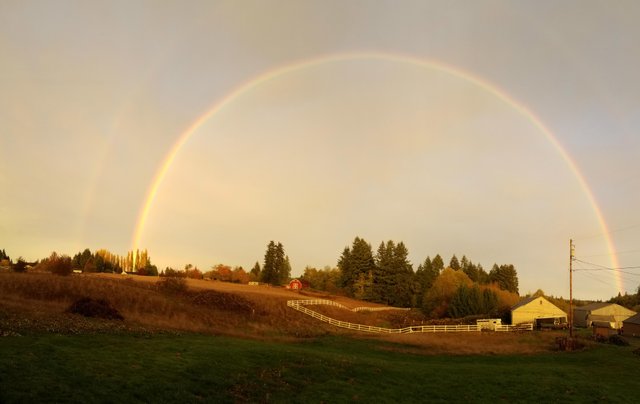
Learning to read the land is an important skill to learn to help you guide your future planting and other work. This goes beyond just looking at the contours but also looking at the hydrology (the way the water moves), the plants, the fungi, etc. Even looking for signs of wildlife is part of reading the land.
Don't expect to become an expert at this overnight--even after years of doing environmental restoration work and designing restoration projects that cost in the hundreds of thousands of dollars I'm still learning.
Luckily, you don't have to be an expert--you just have to keep learning and keep observing the land around you.
Today I went out to a potential restoration site that I'm currently developing a restoration plan to submit for funding from Washington State grants. I thought I would share a bit about what I was observing and give you some tips to do the same on your land.
Looking at the Geography of the Land

The easiest thing to read on the land is the general geography or shape of the land. Are there hills? What about depressions? This also can help you determine which areas might be wet and help guide your future observations.
Today the restoration site I explored is mostly flat. There is only a couple feet of elevation change throughout the entire preserve. This means that any water flowing over the land will only move slowly, and that any changes to water level will apply to a large area.
Plus, this means that plants are likely to be the major factor impacting wind flow and providing shade.
On my own property there are some decent elevation changes that results in water and cool air being channeled down the center of the property to a lowland wetland. That wetland is not only much wetter than the rest of my property but it's also much cooler.
What is the geography like on your land? Is it mostly flat or hilly? Share in the comments!
Looking at the Water of the Land
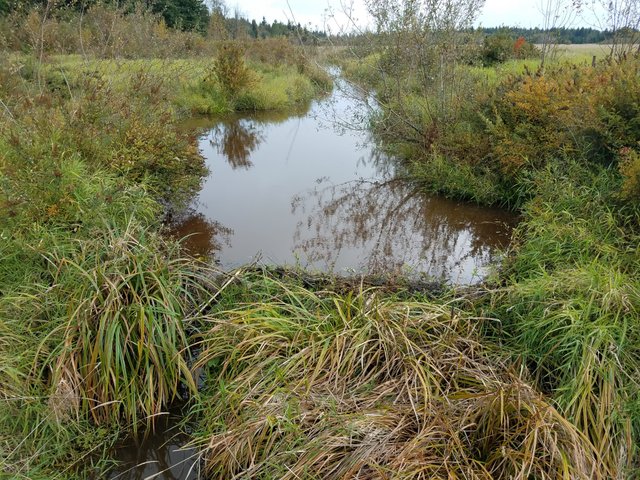
Water will really define your land but surface water is not the only thing you should look at. Groundwater is also very important and can greatly impact your planting success.
On my own property the soil is mostly saturated from November through March. But then it goes completely dry over the summer and the soil often turns rock hard--at least in the areas I have not improved.
The land I visited today is very different. There is surface water in several ponds, and streams year round and the groundwater is only 2.5 feet below the surface in much of the site.
In the winter the site is likely flooded.
This is a very wet site!
I'm considering creating new ponds, and adding more complexity to the existing streams (they have been straightened and mostly turned into ditches) on the restoration site. This will result in a lot of soil being excavated.
The soil will likely be used to create large mounds that will be 2-3 feet above the surrounding land which will be drier and allow for trees and other plants to grow. Since the site has so much water I actually want to create drier areas to get trees established which will provide shade and help cool the streams and ponds.
What about you? Where does water flow through your land? Is it all underground? What about areas that get seasonally wet? Share in the comments!
Looking at the Plants
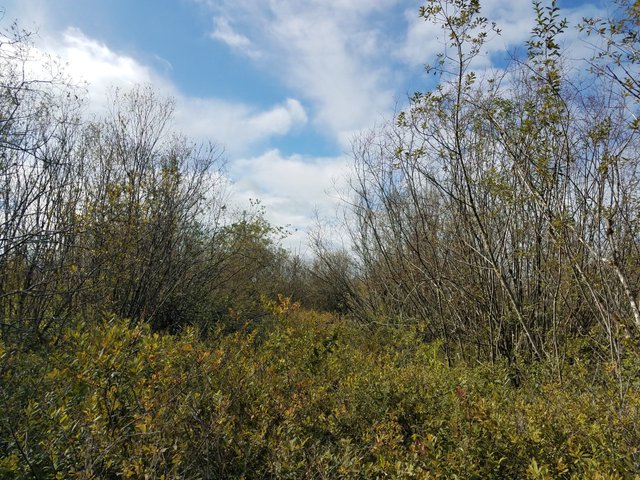
Existing plants can tell you a lot about your land. These plants can tell you what areas are seasonally wet, if the ground water is high, if the land is dry, etc. The existing plants can really help you understand what to plant on your property.
At the site I explored today much of the restoration area was degraded and filled with a single invasive grass that is restricting the natural recovery of the land. But there was one area that was still covered with native vegetation.
This area is a good model for what I can plant in the core restoration areas. Oregon ash and a small number of red alder and black cottonwood formed the canopy layer. Below that canopy black twinberry, red osier dogwood, and Douglas spirea was wide spread. In the herbaceous layer slough sedge was dominate with ferns and other herbaceous plants mixed in.
By walking through that natural area and observing the plants found there I now have a planting list to start from. Observing other areas of the property gave me some additional plants to add including a type of wild rose.
But you have to be careful in this approach. Most likely the land you are observing is formally degraded and is in the process of recovering. Many species of plants that would do great there just won't be present any more--even the seeds can be missing.
Often I view nature as a master craftsman who is forced to work with a toolbox missing most of the tools. Likely nature can still restore the land but with a little help the results can be far better.
Finding and observing healthy natural areas is a good thing to do if your land is degraded due to past human actions.
My own property is heavily degraded and I use my time out in natural forests, prairies, and wetlands to observe and learn what my land could be.
This helps guide my choices--even if I choose not to plant native plants.
What sort of plants do you have growing in your area? Share in the comments!
Looking at Fungi and Wildlife
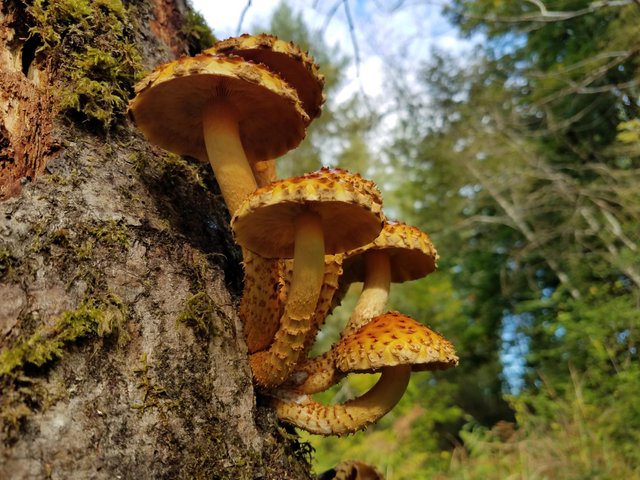
Fungi and wildlife can help you further understand your land. If you see a lot of fungi growing in an area that likely means the soil has a good layer of organic material in or on it. With wildlife this can help you understand what the land is currently capable of supporting.
If you see signs of large predators on your land such as bears, cats, or wolves then that is a good sign that your land and the land around you is supporting a healthy diversity of wildlife. If you don't have these large predators then it's likely that your land and the surrounding land is out of balance.
For my own property there was a lot of signs of deer when I moved here. But there were very little in the way of predators. The largest predator on my land is the coyote. For the most part the deer have no predators to fear except when they're young.
The result was a large amount of deer browse that severely restricted my ability to establish new plants. So I had to fence my property to keep deer out.
But I made sure to create paths for coyotes so they along with hawks, and owls could help keep the rodent (and other small critter) population in a healthy balance.
On the property I'm restoring there is also a lack of large predators but there are some. So some fencing will be needed but only in clusters since there are volunteer plants showing up on their own.
But there are a lot of beavers on the property.
This is great from a restoration perspective but it will make it harder to get plants like willows established. I also have to make sure my restoration designs work even if a beaver builds a dam. I can work around this but if I didn't take the time to observe the land and look for wildlife my designs could fail.
What sort of wildlife do you have on your property? What can you do to help create a healthy balance between predators and prey? Share in the comments!
Putting it All Together
The important thing is to just take your time and walk your land. A lot.
Your land will change throughout the year and as you make modifications it will further change. Sometimes those changes will happen in surprising ways.
It will also take you time to truly get to know your land. Eventually you will get a six sense about your land where you will be walking it and something will just feel different. You might stop and look around more closely and notice signs of deer browse, or rabbit browse, or water pooling up after a large rainstorm in a place you did not expect.
This "feeling" is a sign that your subconscious mind is truly in tune with the land around you. When I walk my land I will often get this feeling and stop and notice something small that has changed or is new. Sometimes all I find is a small footprint but some part of me noticed it before I consciously became aware of it.
When I was dealing with deer breaking through my fence I would be walking through my land and just get the feeling that a deer had been there. I would not have seen a deer or even any sign of browse but I just knew a deer had been there.
I would stop and start very carefully observing in a conscious way and soon I would notice signs of browse, or other issues.
This experience happened many times and was never wrong. Luckily, it has been a long time now since I have had that feeling--the deer fence is working!
Anyone can get to this point of being truly in tune with their land but you will only get there if you take the time to walk, observe and stop and sit on your land. You have to be a part of your land instead of just living on it.
If you want to make it easier to observe the land I highly recommend establishing a network of trails and sit spots. You can check out 2 of my recent blog posts to learn more:
- Nature Trails – 3 Reasons Why You Should Build Them
- Why Outdoor Sit Spots Help You Live a Natural Life
What do you think? Have you enjoyed this post? If you have please tell me in the comments. If this is a popular topic then I will likely write some more posts in the future that dives into detail in a specific area related to reading the land.
Thank you!

Follow me for more posts all about wild homesteading, working with nature, and growing your own food: @wildhomesteading
And check out my blog - www.wildhomesteading.com for weekly in-depth posts on how to work with nature, grow your own food, and build a wild homestead. When you work with nature, nature works with you.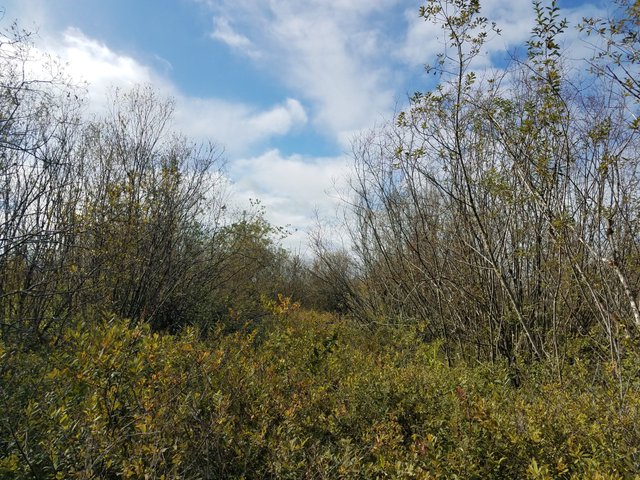
Thanks for sharing this great post!
You're welcome and thanks for the comment!
I think this is an excellent approach to restoring wild land that has been degraded.
I don't have any land to work with, so all I can do is watch other people's efforts. I would like to have a few acres of land again, but it's doubtful that I'll ever be able to afford to buy any land now.
Thank you for the comment! There might be groups in your area that are trying to restore land for nature. The group I work for is always looking for volunteers. When I was out at the site I mentioned in the post I was with 3 restoration volunteers who are helping me collect data in the field. Just an idea!
Do they accept people from other countries as volunteers for a certain period?
I'm sure they would if you were in the area. Most groups are very picky about their volunteers as long as the volunteers are kind to the staff and other volunteers and willing to help out.
To listen to the audio version of this article click on the play image.

Brought to you by @tts. If you find it useful please consider upvoting this reply.
It's almost that we have to connect with and touch the land like a lover - working with the strengths and supporting the weaker parts. I loved this post. It's CRITICAL to observe land for a whole season, if not two, before doing ANYTHING much!!
Leading the curation trail for both @ecotrain & @eco-alex.
Together We’re Making This World A Better Place.
Click Here To Join the manually curated trail "@artemislives" to support quality eco-green content.
Thank you ! Yeah, you do end up feeling very connected with land when you take this approach. It would destroy me if I ever lost the land my wife and I have now... I always observe and try to make changes close to the house first while I observe the area further out. Thanks again!
Thank you! :)
It's a pleasure! ;-)
This post was shared in the Curation Collective Discord community for curators, and upvoted and resteemed by the @c-squared community account after manual review.
@c-squared runs a community witness. Please consider using one of your witness votes on us here
Extremely informative and important information, thanks for sharing it!!
Thank you very much! :) Happy to hear you found it useful!